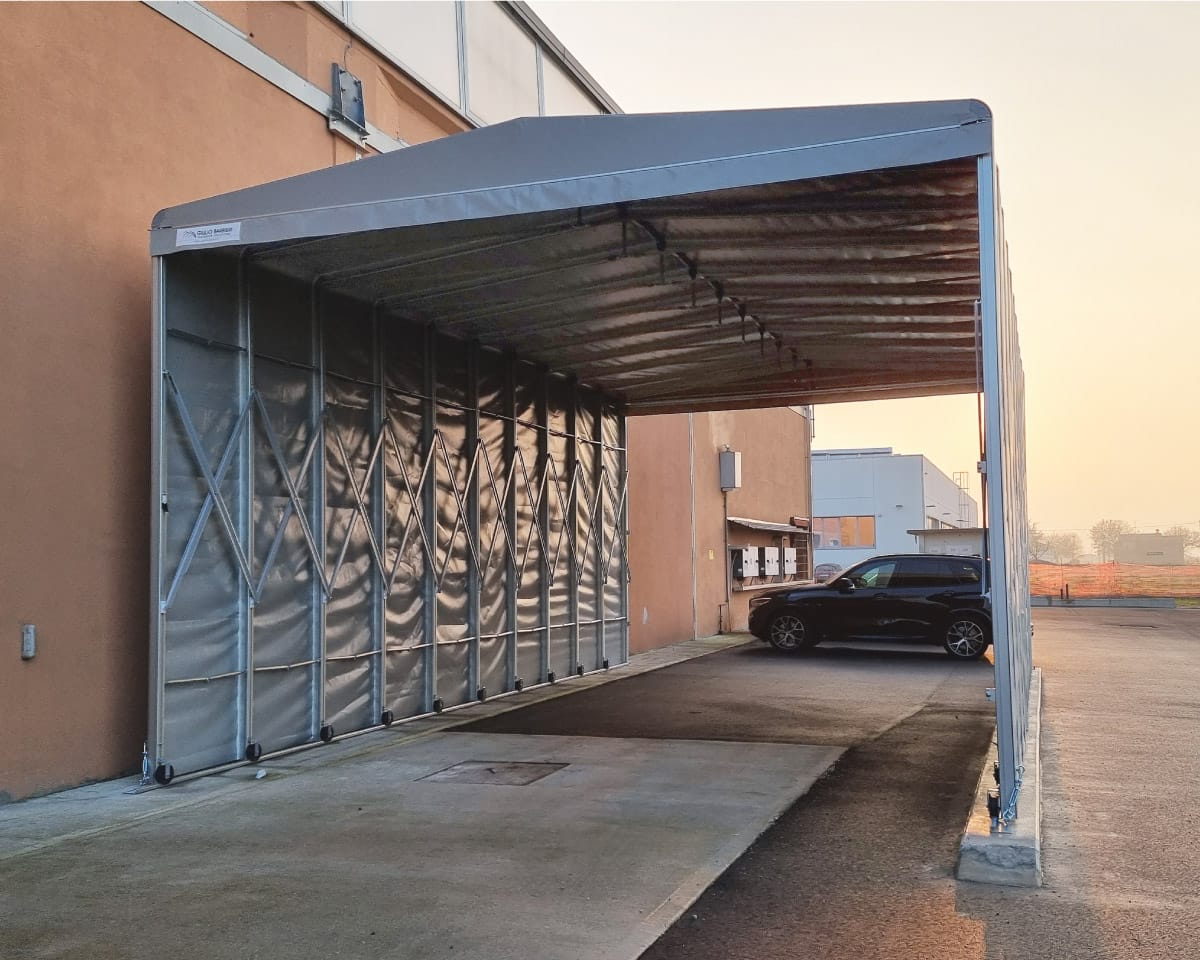Types of Retractable Tunnels
Manual Retractable Tunnels:
- Operated by hand using a simple crank, pulley, or sliding mechanism.
- Suitable for smaller spaces where easy manual adjustment is sufficient.
Motorized Retractable Tunnels:
- Equipped with an electric motor for easy and automated operation.
- Ideal for larger areas or where frequent adjustments are required.
Freestanding Retractable Tunnels:
Stand-alone structures that can be placed independently of buildings or other support.
Versatile for use in open spaces such as gardens, fields, or event areas.
Wall-Mounted Retractable Tunnels:
- Attached to an existing building or structure, these tunnels extend outwards to cover walkways or entrances.
- Perfect for creating covered paths or extending the usable space of a building.
Custom Retractable Tunnels:
- Designed and built to specific dimensions and requirements.
- Ideal for unique applications where standard sizes or designs do not suffice.
Advantages of Retractable Tunnels
- Weather Protection: Provides effective cover from rain, sun, wind, and even snow, making outdoor spaces usable in various weather conditions.
- Flexibility and Convenience: The retractable feature allows you to adjust the tunnel’s coverage based on your needs, offering convenience and versatility.
- Space Efficiency: Can be retracted when not in use, maximizing the open space and maintaining an uncluttered environment.
- Durability: Constructed with robust materials designed to withstand harsh weather, ensuring long-lasting performance.
- Aesthetic Enhancement: Available in various styles, colors, and materials, these tunnels can be tailored to complement the aesthetic of any environment.
- Easy Installation and Maintenance: Designed for straightforward installation with minimal maintenance requirements, making them a hassle-free solution.
- Cost-Effective: Provides a practical alternative to permanent structures, offering flexibility without the need for extensive construction work.
Uses of Retractable Tunnels
Residential Applications:
- Ideal for creating covered walkways between parts of a home, or providing shelter over patios, driveways, and gardens.
- Can be used to protect vehicles, outdoor furniture, or equipment from the elements.
Commercial and Retail Spaces:
- Perfect for covering outdoor seating areas in restaurants, cafes, and bars, enhancing guest comfort.
- Useful for creating sheltered walkways between buildings or from parking areas to entrances.
Industrial Uses:
- Suitable for loading docks, connecting warehouses, or protecting goods and personnel in outdoor work areas.
- Can be used to create temporary storage or workspaces that can be quickly adapted to changing needs.
Event Venues:
- Ideal for temporary event spaces, providing flexible coverage for weddings, exhibitions, fairs, and festivals.
- Can be used to create covered paths or gathering areas for guests.
Agricultural Uses:
- Useful for creating temporary shelters for equipment, livestock, or crops.
- Can protect agricultural processes from adverse weather, such as during planting or harvest times.
Public and Recreational Spaces:
- Used in parks, playgrounds, and sports facilities to create shaded or sheltered areas.
- Can be employed to protect spectators or participants during outdoor events or activities.

 Innov Touch Technologies Pvt Ltd.
Innov Touch Technologies Pvt Ltd.